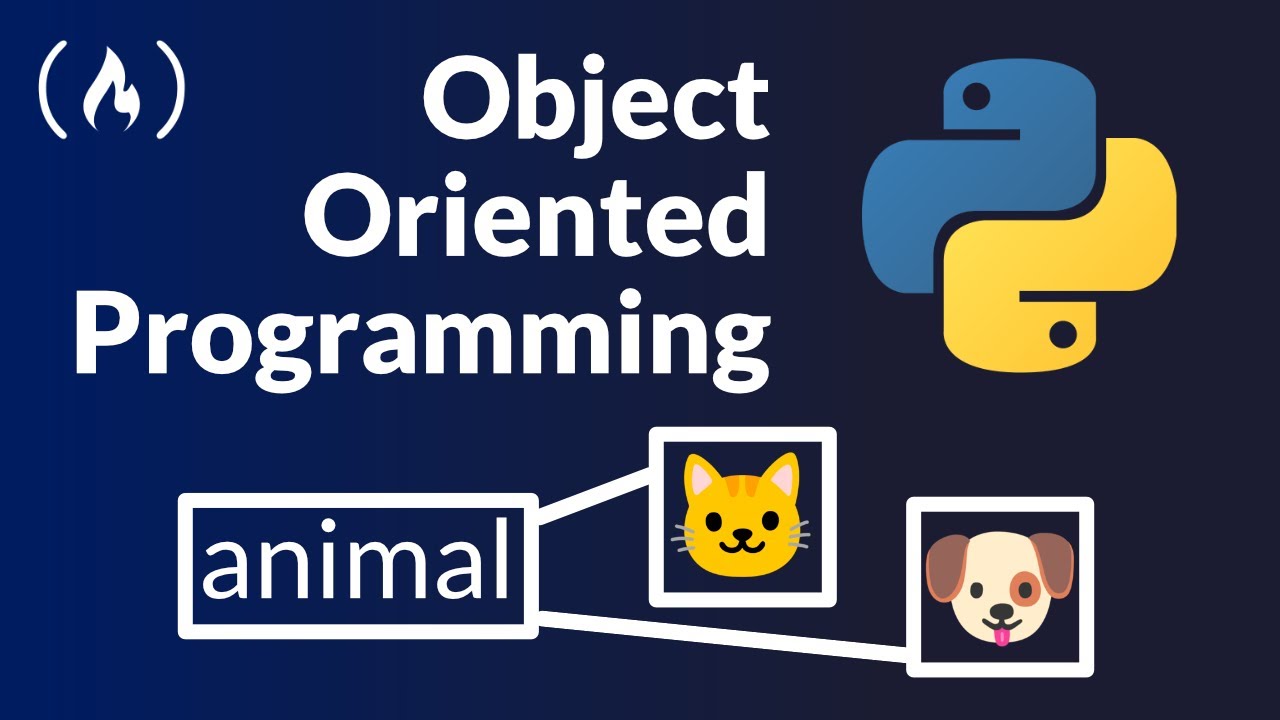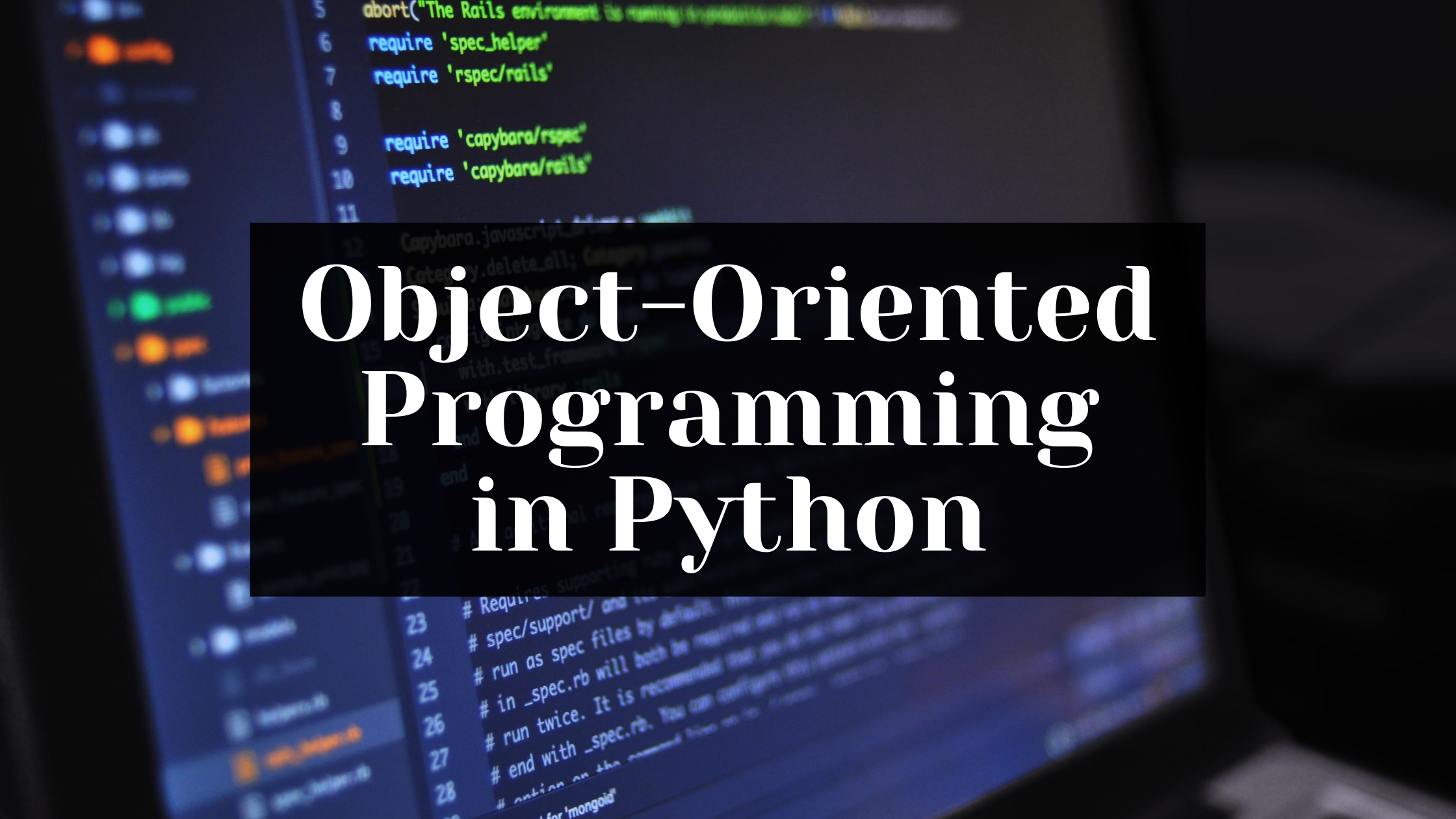Python object oriented programming tutorial
Python object oriented programming tutorial

Here is a comprehensive Python object-oriented programming (OOP) tutorial:
What is Object-Oriented Programming?
Object-Oriented Programming (OOP) is a programming paradigm that uses objects to represent real-world entities, such as animals, vehicles, or buildings. In OOP, each object has its own set of properties and behaviors that describe how it can be used.
Key Concepts in OOP
Classes: A class is a blueprint for creating objects. It defines the properties (data) and behaviors (methods) of an object. Objects: An object is an instance of a class, with its own set of values for the properties defined in the class. Inheritance: Inheritance is the process by which one class can inherit the properties and behaviors of another class. Polymorphism: Polymorphism is the ability to create objects that have different types, but can be treated as if they were of the same type.Python OOP Basics
Here are some basic Python OOP concepts:
Class Definition: In Python, you define a class using theclass keyword followed by the name of the class and parentheses containing any parent classes.
Object Creation: To create an object from a class, you use theclass Animal:def init(self, name):
self.name = name
def speak(self):
print("The animal makes a sound.")
() operator followed by any required arguments.
Properties: Properties are data attributes that define the characteristics of an object. In Python, you usemy_animal = Animal("Fido")print(my_animal.name) # Output: Fido
my_animal.speak() # Output: The animal makes a sound.
self to access and modify properties.
Methods: Methods are functions that belong to a class or object, and can be used to perform specific actions.class Dog(Animal):def init(self, name, breed):
super().init(name)
self.breed = breed
my_dog = Dog("Fido", "Golden Retriever")
print(my_dog.name) # Output: Fido
print(my_dog.breed) # Output: Golden Retriever
class Animal:def init(self, name):
self.name = name
def eat(self):
print(f"{self.name} is eating.")
my_animal = Animal("Fido")
my_animal.eat() # Output: Fido is eating.
Inheritance and Polymorphism
Inheritance: Inheritance allows you to create a new class that inherits the properties and behaviors of an existing class.Polymorphism: Polymorphism allows you to create objects that have different types, but can be treated as if they were of the same type.class Mammal(Animal):def init(self, name):
super().init(name)
def feed(self):
print("The mammal feeds its young.")
my_mammal = Mammal("Whiskers")
print(my_mammal.name) # Output: Whiskers
my_mammal.feed() # Output: The mammal feeds its young.
class Bird(Animal):def init(self, name):
super().init(name)
def fly(self):
print("The bird takes flight.")
my_bird = Bird("Sparrow")
print(my_bird.name) # Output: Sparrow
my_bird.fly() # Output: The bird takes flight.
Conclusion
In this Python OOP tutorial, you learned about the basic concepts of object-oriented programming, including classes, objects, inheritance, and polymorphism. You also saw how to define a class, create an object from a class, access and modify properties, use methods, and practice inheritance and polymorphism.
Next Steps
To continue learning Python OOP, try creating more complex classes with multiple properties and behaviors, and experimenting with inheritance and polymorphism using different parent-child relationships.
Does Python do object-oriented programming?

Yes, Python is an object-oriented programming (OOP) language. In fact, it supports a wide range of OOP concepts, including encapsulation, inheritance, polymorphism, and composition.
One of the core features of OOP in Python is the use of classes. A class is a template for creating objects, and it defines the structure and behavior of those objects. Classes can contain attributes (data) and methods (functions), which are used to manipulate and interact with the objects created from them.
In Python, you can define a class using the class keyword followed by the name of the class. For example:
class Dog:
def init(self, name):
self.name = name
def bark(self):
print("Woof!")
This class defines a Dog object with two attributes: name and a method bark(). When you create an instance of the Dog class (i.e., a Dog object), you can set its name attribute and call its bark() method.
Python also supports inheritance, which allows classes to inherit attributes and methods from parent classes. This is done using the class keyword followed by the name of the child class and the parent class (in parentheses). For example:
class Animal:
def sound(self):
print("Generic animal sound")
class Dog(Animal):
def bark(self):
print("Woof!")
In this example, the Dog class inherits from the Animal class, which means it automatically gets the sound() method. The Dog class also defines its own bark() method.
Python also supports polymorphism through method overriding and overloading. Method overriding is when a child class provides a different implementation of a method that is already defined in its parent class. For example:
class Animal:
def eat(self):
print("Generic animal eating")
class Dog(Animal):
def eat(self):
print("Dog eating kibble")
In this example, the Dog class overrides the eat() method of the Animal class with its own implementation. This allows objects of different classes to respond differently to the same method call.
Finally, Python supports composition, which is when an object contains references to other objects or values. For example:
class Car:
def init(self):
self.wheels = [Wheel() for _ in range(4)]
class Wheel:
pass
In this example, the Car class contains a list of Wheel objects.
Overall, Python's OOP features allow developers to create complex programs with reusable code, modularity, and encapsulation. This makes it an ideal language for building robust, maintainable software systems.





























